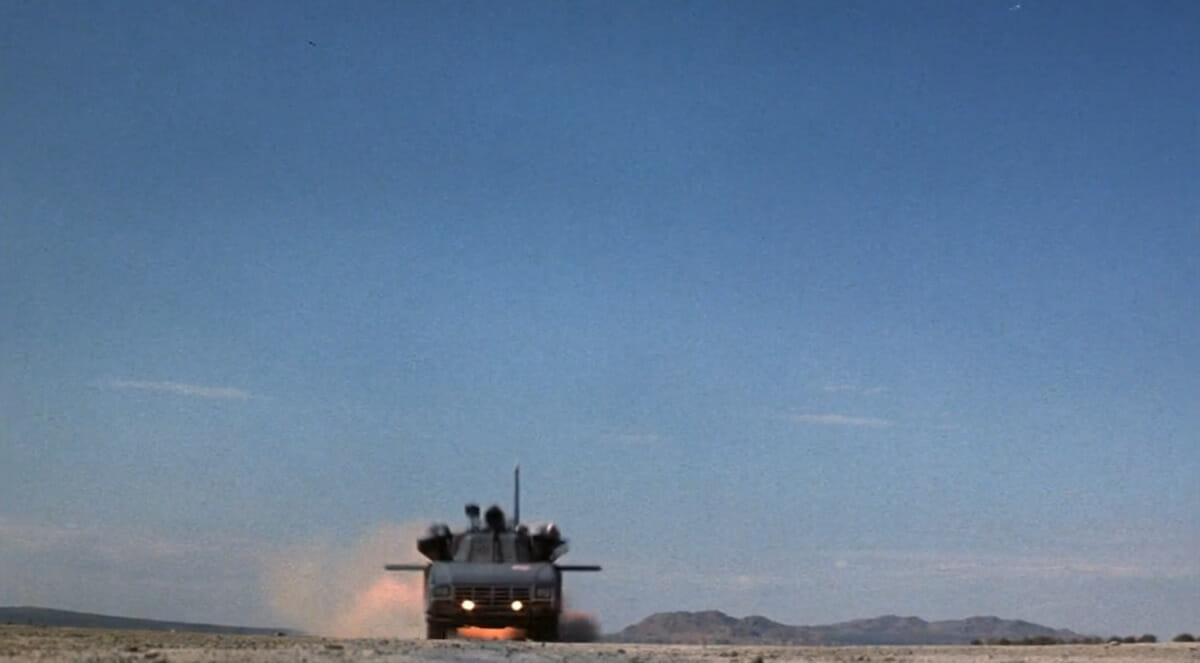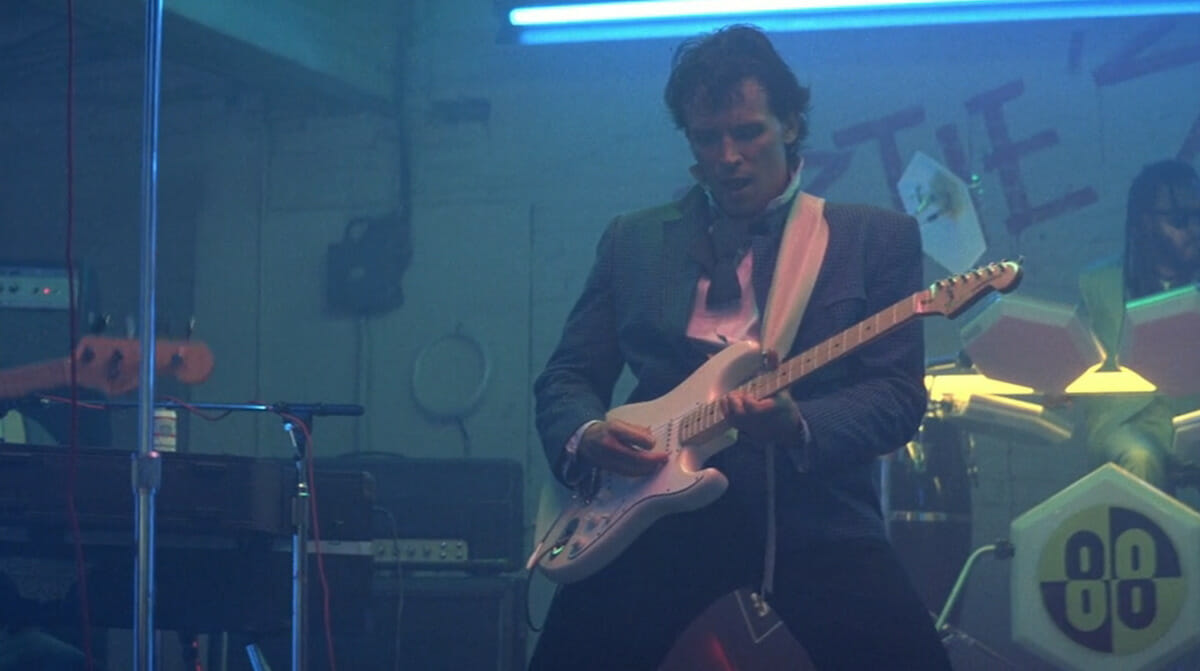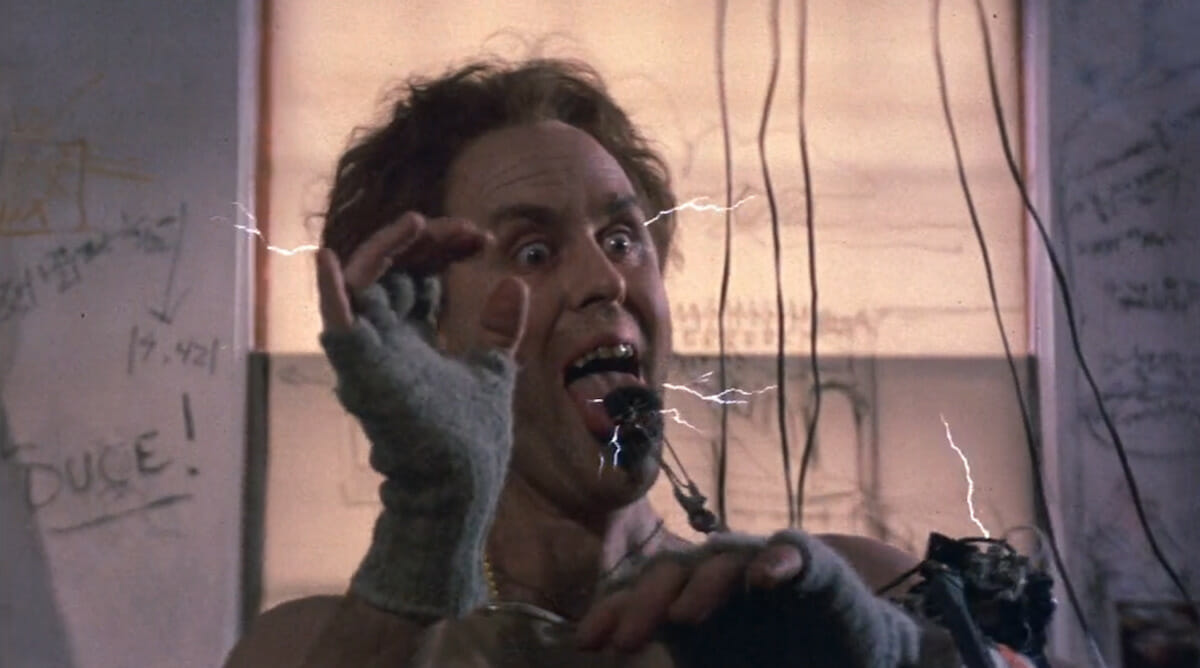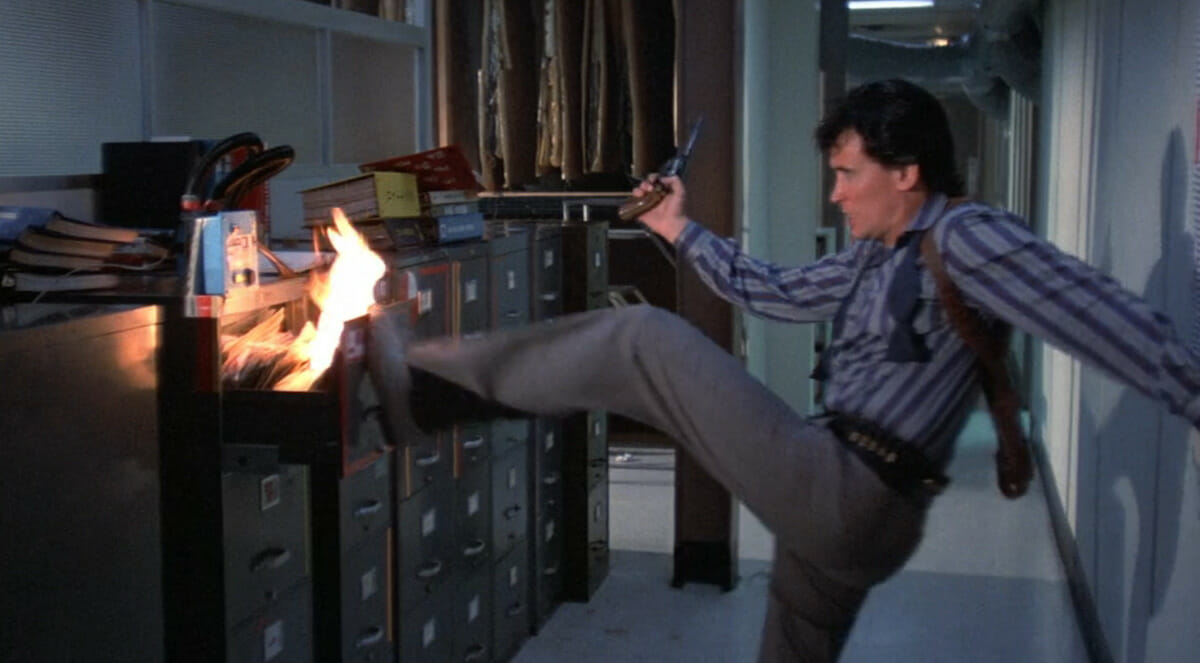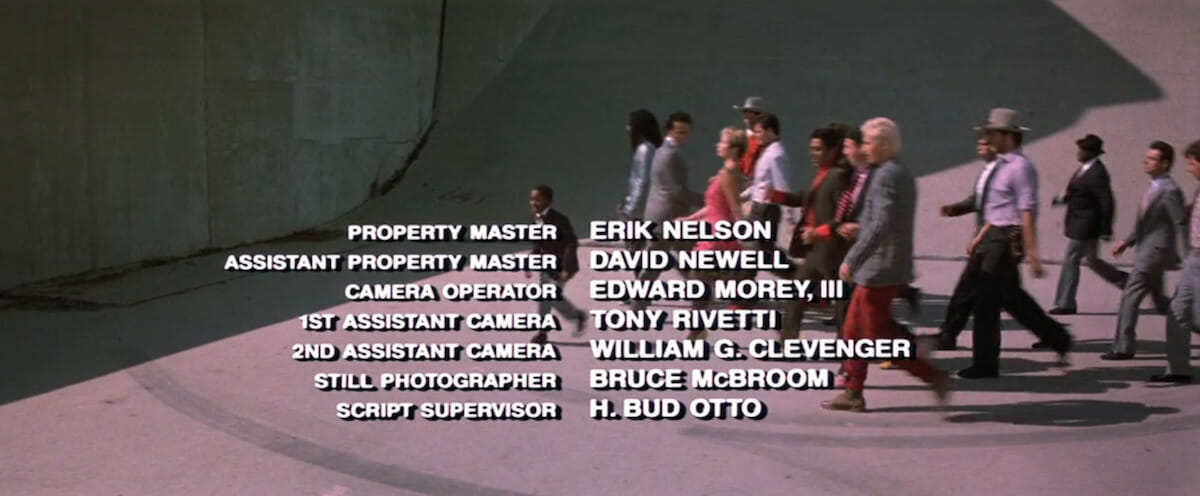It’s been said that The Adventures of Buckaroo Banzai Across the Eighth Dimension is a cult film. That’s pretty easy to claim, since it’s a movie that didn’t connect with audiences when it was released to theaters in August 1984 but has no small measure of affection from many even now, going on four decades later. That’s very nearly the perfect definition of a cult film.
But is Buckaroo Banzai really a cult film? Or was it just a big-studio release that attempted to inspire a cult movie reception that fizzled in theaters but still, somehow, lives?
The Rocky Horror Picture Show is, without a doubt, a cult movie, for example. It was based on a cult stage production. The movie’s August 1975 release by 20th Century Fox is beside the point given its decades of life in midnight showings, complete with audiences throwing bread and squirting water guns. No one says, “Oh, I remember seeing Rocky Horror on the weekend it opened.” It’s always, “Oh, I remember going to see ‘Rocky Horror’ 27 times when I was in college.” By comparison, does anyone remember seeing Buckaroo Banzai on its opening weekend in August 1984? (Aside from me, I mean. I reviewed it for the newspaper where I worked at the time.)
After a week in my small city, the movie disappeared. From the opening crawl trying to set up the premise of a scientist/surgeon/test car driver/rock star, to the end credits, justifiably well-remembered for the music video-like footage of the main characters jauntily parading around the concrete basin of the L.A. River — Buckaroo Banzai is one damn weird movie. And one that I love.
On the results page for a Google search of the film’s title, under the category “People also ask,” the first question is, “Is Buckaroo Banzai a real movie?” In hindsight, the question stands up pretty well: is it a real movie? And furthermore is it a real cult movie? An attempted cult movie? Or is Buckaroo Banzai just a memorable bomb that’s got a Rotten Tomatoes rating of about 68 percent and inexplicably lives on in the hearts and minds of some of us?
I had been a reviewer for my newspaper for several years – all through college and after I got hired full-time – by the time the summer of 1984 came around. It’s hard now to imagine the one-after-another string of hits released those summer months: Beginning in May, Robert Redford’s The Natural and then Indiana Jones and the Temple of Doom. In June, Star Trek III: The Search for Spock, the non-hit Streets of Fire, Ghostbusters, Gremlins and The Karate Kid. In July, The Muppets Take Manhattan, The NeverEnding Story and Prince’s Purple Rain. In other words: except for the Marvel movies that were to come decades later, the summer of 1984 pretty much created our modern-day pop culture. All that was missing was a Bond movie.
By August, the pace of still-remembered films had slowed with releases like “Grandview USA,” The Philadelphia Experiment, Cloak & Dagger, Dreamscape, and Clint Eastwood’s Tightrope. Buckaroo Banzai opened August 10, the same day as Cloak & Dagger, a movie touting Dabney Coleman as a super spy, that had everything that Buckaroo Banzai had, plus the bonus of ticket buyers at the box office.
Buckaroo Banzai –which to this day is referred to as a “docudrama” by its creators, writer Earl Mac Rauch and director W.D. Richter – is a glimpse into a couple of days in the life of Buckaroo Banzai, a late-20th century adventurer, neurosurgeon, physician, test pilot and rock star. By the time the movie opens, Banzai is established as being one of the most famous people on Earth. There’s a Banzai video game. There’s even a comic book based on him – the “latest issue” of which the movie itself offers a glimpse.
It should be noted that Peter Weller, whose ethnicity is reportedly European, plays Banzai, but the character is Asian-American. His ethnicity is noted early on. His mother in a photo snapshot and deleted scene is played by Jamie Lee Curtis, for reasons unknown. His mentor and friend is Professor Hikita, played by Robert Ito, a Canadian actor of Japanese ancestry familiar from the old TV series Quincy, M.E. In a different time, Banzai would have been played by a Japanese-American actor. The production of the film came decades before awareness of on-screen representation was accepted in Hollywood. We can only thank the heavens that there was no effort to make Weller look of mixed race.
Despite this, Weller is as dynamic and charismatic an actor as we could hope for in the role, which depicts him as apart from most homo sapiens and, really, from his own friends. Weller brings an otherworldly feel to the part, which is appropriate not just because of his “other-ness” but because of the otherworldly nature of the plot.
Buckaroo Banzai leaves us with the impression that the events depicted are – except for the appearance of Penny Priddy – just a slice of life in the good doctor’s life. There is, thankfully, no one-by-one assembling of the bulk of the team of Hong Kong Cavaliers and no explanation, for that matter, of why they’re called that. (It’s the band’s name, but why?)
If you’ve read this far into this article, you likely know the plot of the film, which involves the lowest-key, most lackadaisical alien invasion ever, beginning in 1938 and only in the present day do the Red Lectroids and their leader – John Lithgow, in a role that is truly dialed up to 11 as Lizardo/Lord John Whorfin – feel the need to return to their home dimension to conquer it. Unfortunately, they need Banzai’s dimension-spanning oscillation over-thruster to get home.
The movie quickly propels us into Banzai’s everyday world and his skills are amply displayed. One moment he’s testing the rocket truck and piercing the Eighth Dimension and the next he’s performing surgery with Dr. Sidney Zweibel. (“Don’t tug on that – you never know what it might be attached to,” he advises his fellow physician, who is played by a young Jeff Goldblum). Thyen of course he’s on stage performing a banger that proves its essential eighties-ness by including saxophones. When he sings “Since I Don’t Have You,” an infinitely sad song, he senses that a woman (in this case, the exquisite Ellen Barkin) is crying somewhere out in the crowd. Banzai admonishes the crowd to be nice to the sobbing woman and utters the film’s signature quote: “No matter where you go … there you are.”
The movie doesn’t stop to contemplate that the woman is a ringer for Banzai’s dead wife, though, as Buckaroo meets up not only with dangerous Red Lectroids – played, in a treasure trove of 1980s character actor casting, by Christopher Lloyd, Dan Hedaya and Vincent Schiavelli – who want to steal the oscillation overthruster, but also Carl Lumbly as a Black Lectroid. The Black Lectroids are a peace-loving bunch but threaten extreme measures if Lizardo/Whorfin gets the upper hand on Beachhead Earth.
“If it ain’t one thing, it’s another,” Rawhide (played by the redoubtable Clancy Brown) laconically observes.
Rawhide isn’t long for this world, however, and dies in a Red Lectroid attack on the Banzai Institute. Penny is taken by the Lectroids and she has the overthruster in her purse. And New Jersey spots an unlikely element in a piece of equipment in the Banzai lab.
“Why is there a watermelon there?” Goldblum asks in his classic confused tone.
“I’ll tell you later,” Pepe Serna, playing Hong Kong Cavalier Reno, replies.
(As 1980s science-fiction movie mysteries go, this one leaves us hanging, unlike Yoda and Ben Kenobi’s coyness about the number of Skywalker offspring. We never find out why the watermelon is there. Buckaroo Banzai is not ruined by this.)
Although things turned out well for Buckaroo Banzai as a character, they did not, in the summer of 1984, turn out well for Buckaroo Banzai as a theater release.
“Buckaroo Banzai is one of the best films of the summer*, read the headline on my Thursday, August 16 review of the movie for The Muncie (Indiana) Evening Press.
Publication of my review had been delayed for a few days, frustratingly enough, but even then I had no illusion that if I’d only gotten word out earlier, it might have helped audiences find the movie.
The hopelessness of touting Buckaroo Banzai was built right in at the top of my review: “Is the world ready for a movie hero who’s a cross between Albert Einstein, Sir Edmund Hillary, and Bruce Springsteen? Obviously not. ‘Buckaroo Banzai’ opened last Friday to small crowds nationwide and locally the film closes today. Personally I was so delighted by the new movie that I saw it twice in one day. As portrayed by Peter Weller, Buckaroo Banzai is the most engaging screen hero since Indiana Jones.”
I should have saved my breath.
Seeing box office totals from the weekend before in newspaper reports, or some primitive form of communication of the day, I knew the movie had bombed. For a decade by that point, even the average person was aware of the idea of a box office hit. Jaws in 1975 had illustrated that point and, some would argue, forever turned the summer movie months into a box office sweepstakes. Star Wars in 1977 only reinforced the judgment that movies were bombs if they didn’t rake in millions of dollars. If movies didn’t find their audience, usually quickly, they were bombs. And boy, was Buckaroo Banzai a bomb.
Box Office Mojo recounts the domestic box office figures for August 1984 and, not surprisingly, “Ghostbusters” was the top ticket-seller that month, to the tune of a gross of $38.3 million in August alone. That was followed by Purple Rain, Red Dawn, and on and on down the list until we get to the 26th film, Buckaroo Banzai, which made $1.9 million that month.
But what about its status as a cult movie?
In a very perceptive article on the Roger Ebert site at the time of the movie’s Blu-Ray release in August 2016, Peter Sobczynski wrote that 20th Century Fox had tried to sell the movie at science fiction conventions as “a cult movie in the making.”
“Unfortunately, this approach wound up backfiring as the sci-fi audience was understandably wary of anything announcing itself as a cult movie before anyone had actually seen it—in their eyes, a cult movie is one that is discovered and nurtured by a loyal audience, not one that arrives in theaters proclaiming itself as such right from the get-go,” Sobczynski wrote.
Along with the press kit for the movie, Fox mailed out Team Banzai headbands to reviewers. I still have mine, in a box somewhere.
The arbiter of cult movies – other than audience tastes – in the 1980s was reliably Danny Peary’s Cult Movies books. Only the third book in Peary’s series was published after “Buckaroo Banzai.” Peary’s 1988 book includes 50 – count ‘em, 50 – cult movies not included in his earlier two volumes, including Easy Rider and Psycho.
Buckaroo Banzai is not among them.
Spurred along by showings on cable TV and its presence on home video, Buckaroo Banzai gradually grew in reputation. If it’s a cult movie, it’s a one-off cult movie, despite the just-before-the-end-credits slides that read, “Watch for the next adventure of Buckaroo Banzai … Buckaroo Banzai Against the World Crime League.” Horrible box office and, reportedly, legal and rights issues conspired against the long lives of the Hong Kong Cavaliers more effectively than any enemy ever did. The sequel was never made. We should have been on our sixth or seventh Team Banzai adventure by now and franklyI still feel cheated.
Finally, what are we to make of the end credits? Set to Michael Boddicker’s instrumental piece, sometimes referred to as “The Team March,” the credits show the Banzai crew proudly strutting around the concrete Los Angeles River Basin. If we put ourselves into the world of the characters, we can easily assume it takes place after the action of the movie: Team Banzai members now include John Parker (Carl Lumbly), the friendly Eighth Dimension warrior who joins the crew during the movie. There’s Jeff Goldblum as Zweibel, who is recruited in the early surgery scene and notes that people call him New Jersey. Blue Blaze Irregulars like Pinky Carruthers, and the father-and-son team Casper and Scooter Lindley are there, too.
But perplexingly, so is Rawhide (Clancy Brown) – perhaps Banzai’s closest friend and advisor, who was killed in the movie. Does Rawhide’s presence in the Team March mean that he recovered and is alive somehow? Is there significance to the quick “five on the downside” that Rawhide and Buckaroo share? Or that the credits take place in some fantasy realm where all the Hong Kong Cavaliers are together, along with Penny Priddy and others met during this adventure?
In the end, the ending credits are a perfect fit for Buckaroo Banzai. The credits and the movie overall amount to puzzles that leave us wondering, wanting more and wishing things had played out differently.
“Is Buckaroo Banzai a real movie?” To this, I say yeah, it is. And it’s a cult movie too. I have the headband to prove it.

